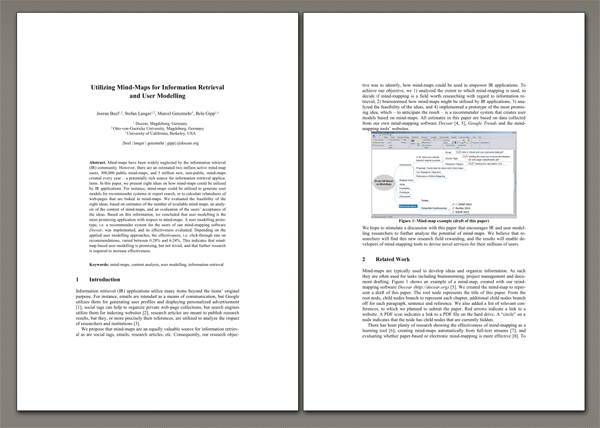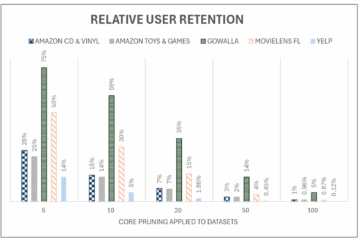We recently submitted a paper to UMAP (The Conference on User Modelling, Adaptation, and Personalization). The paper was about how mind-maps could be utilized by information retrieval applications such as recommender systems. The paper got accepted, which means we will be in Aalborg, Denmark from July 7 until July 11 to present the paper. If you are a researcher in the field of information retrieval, or user modelling, or mind-mapping, you might be interested in the pre-print. Btw. if you find any errors in it, we would highly appreciate if you told us (ideally today). Similarly, if you are interested in a research partnership, or if you are also at UMAP 2014 and would like to discuss our research, please contact us.
Abstract. Mind-maps have been widely neglected by the information retrieval (IR) community. However, there are an estimated two million active mind-map users, 300,000 public mind-maps, and 5 million new, non-public, mind-maps created every year – a potentially rich source for information retrieval applications. In this paper, we present eight ideas on how mind-maps could be utilized by IR applications. For instance, mind-maps could be utilized to generate user models for recommender systems or expert search, or to calculate relatedness of web-pages that are linked in mind-maps. We evaluated the feasibility of the eight ideas, based on estimates of the number of available mind-maps, an analysis of the content of mind-maps, and an evaluation of the users’ acceptance of the ideas. Based on this information, we concluded that user modelling is the most promising application with respect to mind-maps. A user modelling prototype, i.e. a recommender system for the users of our mind-mapping software Docear, was implemented, and its effectiveness evaluated. Depending on the applied user modelling approaches, the effectiveness, i.e. click-through rate on recommendations, varied between 0.28% and 6.24%. This indicates that mind-map based user modelling is promising, but not trivial, and that further research is required to increase effectiveness.




0 Comments